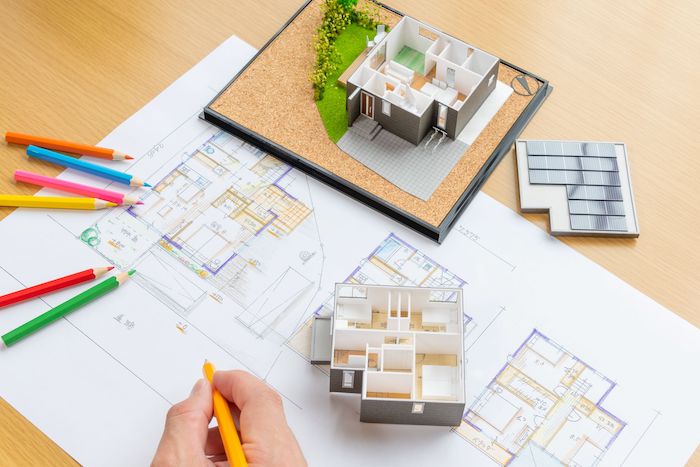
As we suffer from climate change and temperatures rise over the years, we must adapt our lifestyles. Recently, the focus on sustainable living has increased. Sustainable living refers to incorporating environmentally friendly policies. Construction and building are significant areas where we need to introduce sustainable practices.
While construction practices have not been environmentally friendly, going green has several benefits for construction companies. Not only does it improve their reputation, but it also makes it easier to stay within budget. Sustainable practices, such as energy-efficient windows, also save money in the long run. Here are some other ways construction companies can make their operations eco-friendly.
1. Eliminate Unnecessary Energy Usage
One of the biggest culprits of climate change is our unnecessary energy usage. From leaving on lights and fans to using energy-inefficient appliances, we waste significant energy as heat in our environment. It increases the energy demand, and power plants burn more fossil fuels to meet this demand, resulting in an increased carbon footprint.
Buildings must be energy efficient. Invest in materials like energy-efficient overhead cranes, and consider using a suitable on-site generator. Remember that energy-efficient construction tools can be challenging to work with and repair, and you must know how the weather impacts their use.
2. Use Sustainable Building Materials
Engineers mostly use concrete in construction, but concrete is not environmentally friendly. Its production releases several greenhouse gasses, which contribute to climate change. So to work sustainably, we must find alternate building materials that are more eco-friendly.
Several alternatives can help us reduce concrete in our buildings. One of them includes straw bales which also provide better insulation from heat and cold levels, as long as you seal them correctly. Another alternative is bamboo. It is lightweight, and has high tensile strength, making it ideal for use in construction. Other possible alternatives are wood, mycelium, recycled plastics, and hempcrete.
3. Use Prefabricated Material
Prefabricated material refers to material produced in a controlled environment instead of on the construction site. You can prefabricate several essential building parts, such as doors, windows, stairs, and floor and wall panels. Producing these parts on the construction site requires extra materials, resulting in significant waste. And since there are no effective waste treatment mechanisms on the construction site, you can cause air and soil pollution. You will generate some effluent which will go to the soil, whereas if you prefabricate your materials, you can treat your effluent in a controlled environment. Likewise, you will release minute, less harmful particles in the air when you cut and process your material in an open environment.
4. Avoid Paper Blueprints
The world has gone digital, and so should construction companies. Paper blueprints cause paper waste, which increases the demand for paper and requires cutting down more trees. They also generate significant waste. Instead of using paper blueprints or designs, opt for a digital solution, such as construction management software.
Construction management software is not only eco-friendly but also more convenient. You can perform complex calculations efficiently through the software. Through that, you can analyze any risks you may incur, manage the portfolio and documents, and track the progress of your project. Some software has a cloud-based service that allows for better coordination between your on-site and off-site staff, making them superior to traditional blueprint-based construction planning.
5. Discard Waste Effectively
You will generate significant waste on your construction site and must know how to discard it in an eco-friendly manner. Typical construction waste includes shingles, gravel, lumber, and pieces of drywall. Consider hiring environmental engineering companies with 40 Hour HAZWOPER Laborers to make your waste management eco-friendly.
Recycle as much waste as possible, such as plastics, paper, masonry, and plywood. You can send paper and plastics to a recycling plant and reuse masonry in your project. You can convert lumber and plywood into biomass to fulfill your construction energy needs. If you have any metal waste, you can smelt it and convert it into other products.
Ensure your waste does not go to any nearby streams or rivers. If it does, fish can eat it and become part of the food chain. In such a scenario, it can be a health hazard. Use a silt fence to control sediment flow. It can prevent most of your particles from escaping to river bodies and protect against soil erosion by acting as a water break.
Endnote
The world is going through unprecedented climate change. Environmental activists have raised concerns about our lifestyle’s impact on the environment and warned that we must practice sustainable living to survive as a species and slow down the effects of climate change. Sustainable construction of our buildings can make a crucial difference.
Construction companies should ensure their machinery is energy efficient. They should consider using sustainable building materials instead of concrete and use prefabricated windows and doors. Use construction management software instead of paper blueprints and use efficient waste management. Doing so will make our constructions eco-friendly.
